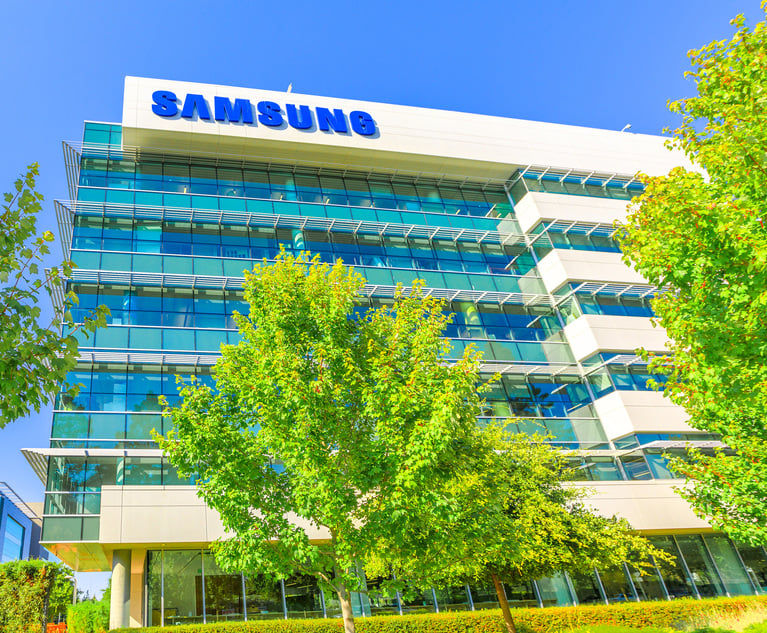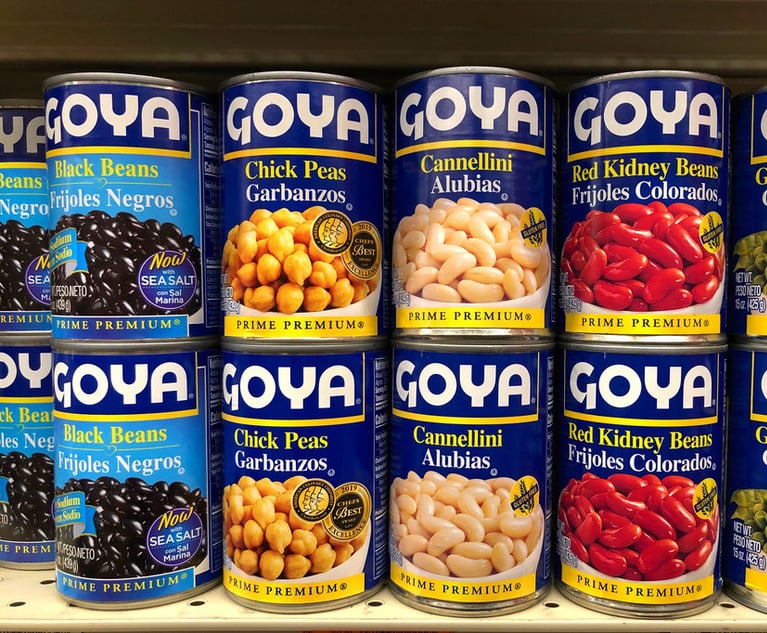TLD Trouble
ICANN's plan to allow unlimited domain names may burden trademark owners.
September 30, 2008 at 08:00 PM
6 minute read
In fewer than nine months, the Internet is scheduled to begin a massive change. But it may not be a change for the better, many trademark owners fear.
The Internet Corporation for Assigned Names and Numbers (ICANN), which oversees the Internet's operations, asserts that the plan to allow an almost unlimited number of new domains–which it approved in late June–is a great step forward.
Trademark owners, however, typically view this change with some trepidation. Although it will offer them great new marketing opportunities, it also will make protecting their marks online far more difficult and expensive.
The plan concerns top level domains (TLDs). There are currently only 21 generic top level domains–including .com, .net, .biz and .travel. These TLDs appear at the far right of Web site names and e-mail addresses. (There also are more than 240 country code top level domains, such as .it for Italy and .us for the United States.)
ICANN intends to open up an almost infinite number of new TLDs. Interested companies will be able to apply for the right to use any string of letters as a TLD, for instance, .toyota or .drugs. Each TLD could give rise to a huge number of domain names and e-mail addresses, such as www.pfizer.drugs or www.zoloft.drugs.
“Uses for the new TLDs is limited only by people's imaginations,” says Jason Keenan, an ICANN spokesperson.
Brand Broadening
For trademark owners, there is clearly an upside to ICANN's attempt to revolutionize the Internet. It offers powerful new branding opportunities.
Companies could use their trademarks as TLDs. Dell Computer, for instance, could create a .dell TLD. Then potential customers seeking information on Dell laptops could go to www.laptops.dell or send their queries to [email protected]. Job hunters could go to www.jobs.dell, while bargain hunters could check out www.coupons.dell. Such a brand name TLD could greatly strengthen a brand's identity, Keenan asserts.
ICANN's plan also could prove useful to companies that have been unable to obtain for themselves good .com domain names or one of the other common TLDs. “If you're a company with a brand name that is already taken in some of the more well-known TLDs, this gives you an opportunity to get your name in another domain,” says Steve DelBianco, executive director of NetChoice, a coalition that represents online businesses.
Then there are TLDs directed to certain types of products, such as .cars or .drugs. Registering such sector TLDs may be an attractive prospect for companies in these sectors, notes Steven Metalitz, a partner in Mitchell Silberberg & Knupp.
Red Tape
Registering a new TLD won't be easy, however. It will not be at all like the simple and routine process of registering a domain name, which can be completed in a few minutes online or over the phone. Registering a TLD will require a lot of paperwork, as well as proof that the applicant meets a hefty list of financial and technical requirements. The applicant must show, for instance, that it has provided for data escrow, so that if its servers get hit by a tornado, the domain name data for the TLD will exist in a backup location, and the domain names in that TLD can continue operating.
The cost of applying for a TLD will be substantial. There will be various attorneys fees and other expenses plus a hefty application fee. The exact amount of this fee hasn't been determined yet, but some experts estimate it will be at least $100,000. Some say it could run as high as $500,000. What is clear is that the application fee will be nonrefundable, so if the application is denied, the applicant will lose a significant amount of money.
There are plenty of grounds for denying an application, even when the applicant meets ICANN's financial and technical criteria. Third parties can object that the proposed TLD violates either their legal rights or “public morality and order.”
These are “remarkably vague grounds” for opposition, according to Jessica Litman, who teaches trademark law at the University of Michigan Law School. Depending on how ICANN's staff eventually construes these provisions, it may be surprisingly difficult to get TLDs, she warns. For instance, owners of existing Web sites, such as www.drugs.com, could claim they have established trademark rights that would be diluted by the creation of a .drugs TLD. “It would not be a great argument under trademark law, but I can absolutely imagine a procedure in place that would allow drugs.com the right to stop or the right of first refusal over .drugs,” Litman says.
Even if a proposed TLD is not objectionable, an applicant still may not be able to get its desired domain if more than one entity applies for the domain. It's easy to imagine a big tussle over the rights to .cars or .drugs, for instance.
“If two parties both want the same TLD and they can't agree on arrangements to resolve that dispute, there will be a comparative evaluation of their applications, or if the parties are amenable, an auction,” says Metalitz.
Squatter Alert
There's one major downside to ICANN's planned expansion of TLDs: It will greatly increase the potential for cybersquatting. Even if the TLD itself doesn't violate a company's trademark (e.g., .cars), a bad actor could register infringing secondary domains within that TLD (e.g., www.toyota.cars or www.prius.cars).
In the past, companies typically have dealt with cybersquatters by collecting domain names that contain either their marks or variations of their marks. This can result in a company paying for a lot of domain names. For example, eBay owns nearly 20,000 domain names in the current set of TLDs, DelBianco says.
But if ICANN throws open the doors to a nearly unlimited number of TLDs, how can a company possibly register all the variants of its marks in all these domains? It can't, many experts assert.
“When making defensive domain name registrations, trademark owners will need to be more selective and discriminating than they have been in the past,” Metalitz says. “If there are five new TLDs, a company can register in all of them, but if there are 500 new TLDs, the company will need to engage in some triage.”
A company should register only in those TLDs where consumers expect to find the company or its products, experts advise. “If a new TLD is .tires, Firestone should get domain names there, but Marriott, which has nothing to do with tires, doesn't need to register all permutations of its name in that TLD. It may not even need to register its main name in that domain,” says David Steele, special counsel at Christie Parker & Hale.
ICANN's plan poses challenges for trademark owners, but those challenges are manageable, according to many trademark experts. “For brand owners, the sky isn't falling,” Steele says.
This content has been archived. It is available through our partners, LexisNexis® and Bloomberg Law.
To view this content, please continue to their sites.
Not a Lexis Subscriber?
Subscribe Now
Not a Bloomberg Law Subscriber?
Subscribe Now
NOT FOR REPRINT
© 2025 ALM Global, LLC, All Rights Reserved. Request academic re-use from www.copyright.com. All other uses, submit a request to [email protected]. For more information visit Asset & Logo Licensing.
You Might Like
View All
Best Practices for Adopting and Adapting to AI: Mitigating Risk in Light of Increasing Regulatory and Shareholder Scrutiny
7 minute read
FOMO Run Amok? Resolve of Firms Chasing AI Dreams Tested by Sky-High Costs


Trending Stories
Who Got The Work
Michael G. Bongiorno, Andrew Scott Dulberg and Elizabeth E. Driscoll from Wilmer Cutler Pickering Hale and Dorr have stepped in to represent Symbotic Inc., an A.I.-enabled technology platform that focuses on increasing supply chain efficiency, and other defendants in a pending shareholder derivative lawsuit. The case, filed Oct. 2 in Massachusetts District Court by the Brown Law Firm on behalf of Stephen Austen, accuses certain officers and directors of misleading investors in regard to Symbotic's potential for margin growth by failing to disclose that the company was not equipped to timely deploy its systems or manage expenses through project delays. The case, assigned to U.S. District Judge Nathaniel M. Gorton, is 1:24-cv-12522, Austen v. Cohen et al.
Who Got The Work
Edmund Polubinski and Marie Killmond of Davis Polk & Wardwell have entered appearances for data platform software development company MongoDB and other defendants in a pending shareholder derivative lawsuit. The action, filed Oct. 7 in New York Southern District Court by the Brown Law Firm, accuses the company's directors and/or officers of falsely expressing confidence in the company’s restructuring of its sales incentive plan and downplaying the severity of decreases in its upfront commitments. The case is 1:24-cv-07594, Roy v. Ittycheria et al.
Who Got The Work
Amy O. Bruchs and Kurt F. Ellison of Michael Best & Friedrich have entered appearances for Epic Systems Corp. in a pending employment discrimination lawsuit. The suit was filed Sept. 7 in Wisconsin Western District Court by Levine Eisberner LLC and Siri & Glimstad on behalf of a project manager who claims that he was wrongfully terminated after applying for a religious exemption to the defendant's COVID-19 vaccine mandate. The case, assigned to U.S. Magistrate Judge Anita Marie Boor, is 3:24-cv-00630, Secker, Nathan v. Epic Systems Corporation.
Who Got The Work
David X. Sullivan, Thomas J. Finn and Gregory A. Hall from McCarter & English have entered appearances for Sunrun Installation Services in a pending civil rights lawsuit. The complaint was filed Sept. 4 in Connecticut District Court by attorney Robert M. Berke on behalf of former employee George Edward Steins, who was arrested and charged with employing an unregistered home improvement salesperson. The complaint alleges that had Sunrun informed the Connecticut Department of Consumer Protection that the plaintiff's employment had ended in 2017 and that he no longer held Sunrun's home improvement contractor license, he would not have been hit with charges, which were dismissed in May 2024. The case, assigned to U.S. District Judge Jeffrey A. Meyer, is 3:24-cv-01423, Steins v. Sunrun, Inc. et al.
Who Got The Work
Greenberg Traurig shareholder Joshua L. Raskin has entered an appearance for boohoo.com UK Ltd. in a pending patent infringement lawsuit. The suit, filed Sept. 3 in Texas Eastern District Court by Rozier Hardt McDonough on behalf of Alto Dynamics, asserts five patents related to an online shopping platform. The case, assigned to U.S. District Judge Rodney Gilstrap, is 2:24-cv-00719, Alto Dynamics, LLC v. boohoo.com UK Limited.
Featured Firms
Law Offices of Gary Martin Hays & Associates, P.C.
(470) 294-1674
Law Offices of Mark E. Salomone
(857) 444-6468
Smith & Hassler
(713) 739-1250






